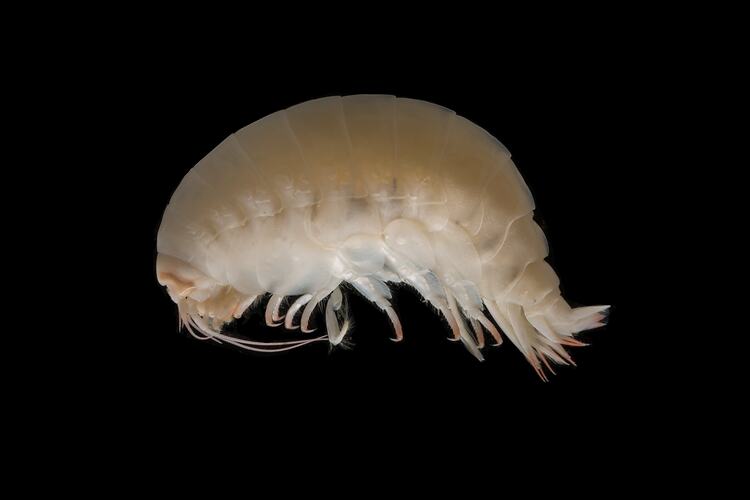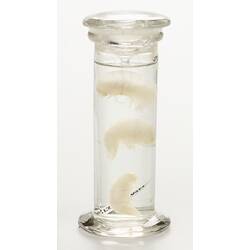General Description
Although it is difficult to tell Eurythenes species apart by their morphology (shape), genetic studies suggest that depth is a major driver for speciation. Colours differ between species, but live animals are generally reddish in colour with pale or white eyes. Eurythenes are relatively large amphipods that can reach sizes up to 90 mm.
Biology
Eurythenes are known throughout the world's oceans. Inhabiting depths between 175 and 8000 m, species are thought to have diverged as a result of depth rather than geographical locations. It has been observed that Eurythenes show ontogenetic stratification, meaning that juveniles will live and feed in shallower waters than mature individuals. At lower depths, it is also possible they burrow into the seafloor to avoid possible dangers. As a scavenger of the deep sea, Eurythenesis one of the forerunning animal groups being used to understand connectivity within the deep sea.
Distribution
Cosmopolitan genus, known from around the world.
Habitat
Marine, pelagic or benthic.
More Information
-
Animal Type
-
Animal SubType
-
Fast Fact
Specimens of Eurythenes have been collected all over the world. From a Manta Ray carcass in New South Wales to fish vomit in Greenland!
-
Brief Id
Deep sea scavenging crustaceans that feed on the carcasses of marine animals.
-
Colours
Red, White
-
Maximum Size
90 mm
-
Habitats
-
Diet
Carnivore
-
Endemicity
-
Commercial
No
-
Depths
Deep ( > 30 m)
-
Water Column Locations
Midwater, On or near seafloor
-
Taxon Name
-
Scientific Author
Smith, 1882
-
Common Name
Scavenging Amphipod
-
Other Names
Deep-sea Amphipod
-
Phylum
-
Subphylum
-
Superclass
-
Class
-
Subclass
-
Superorder
-
Order
-
Suborder
-
Superfamily
-
Family
-
Genus


